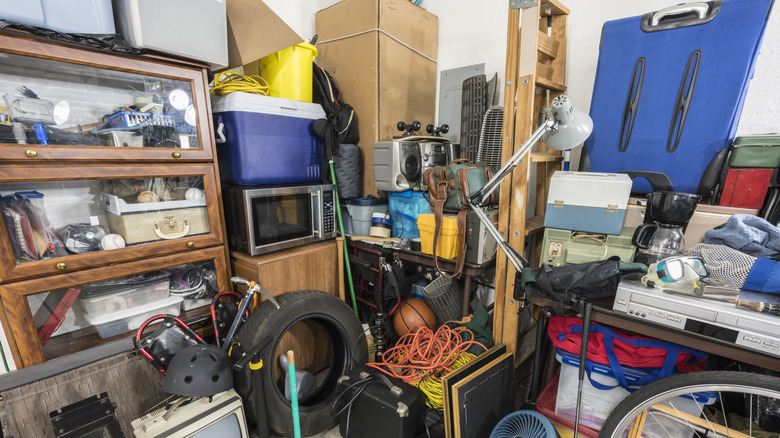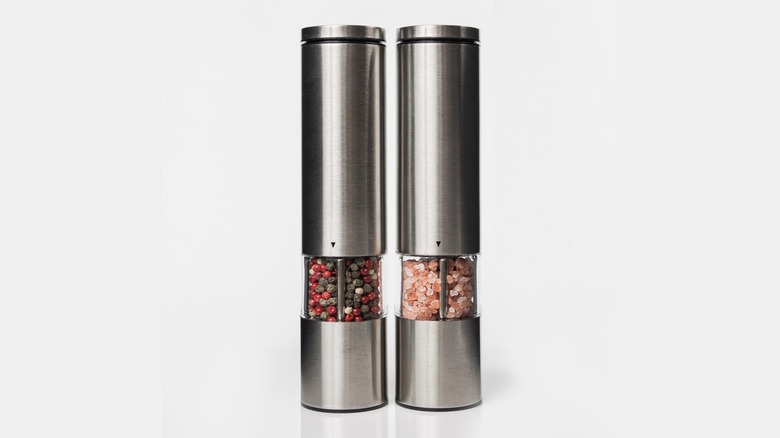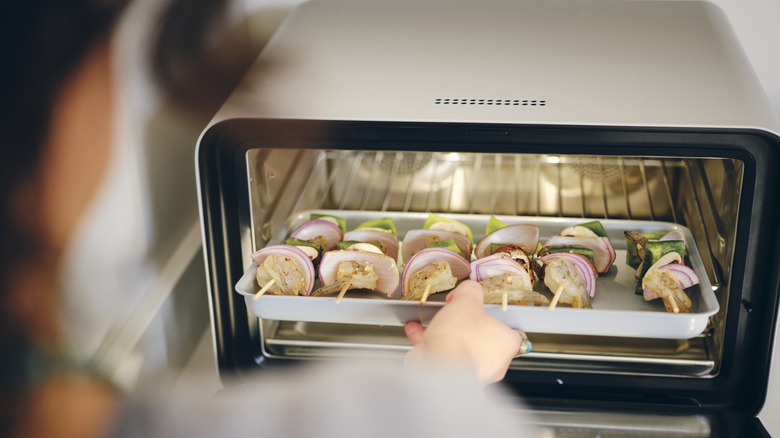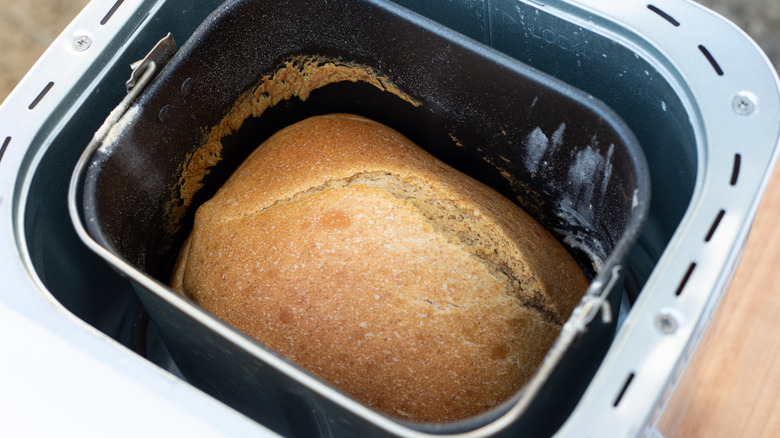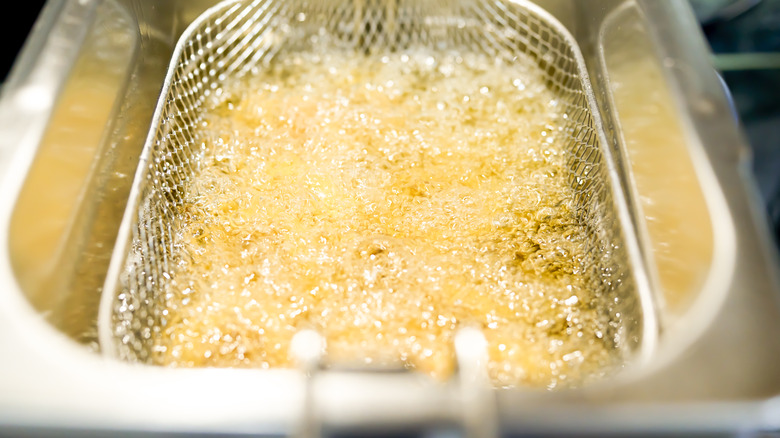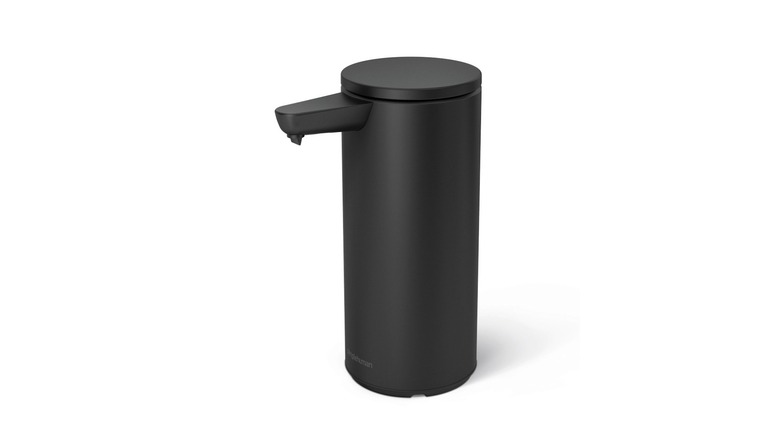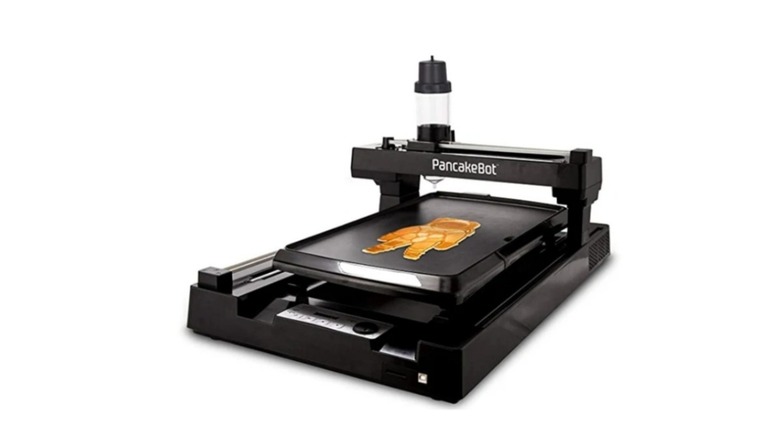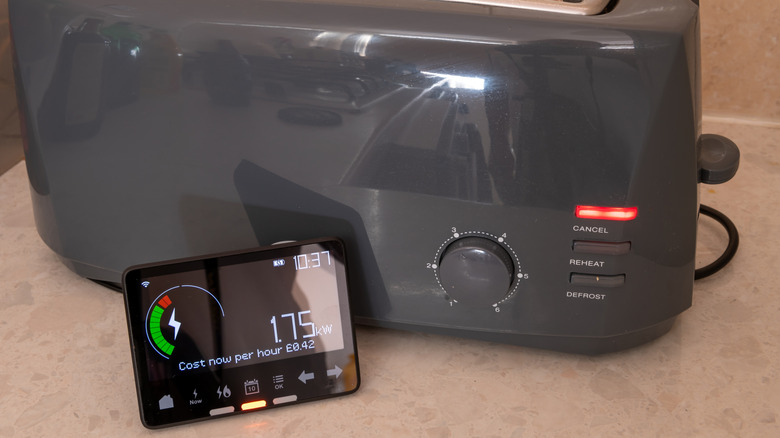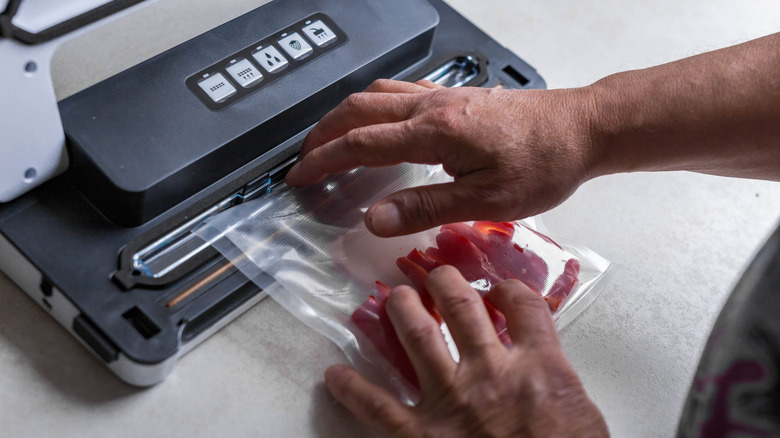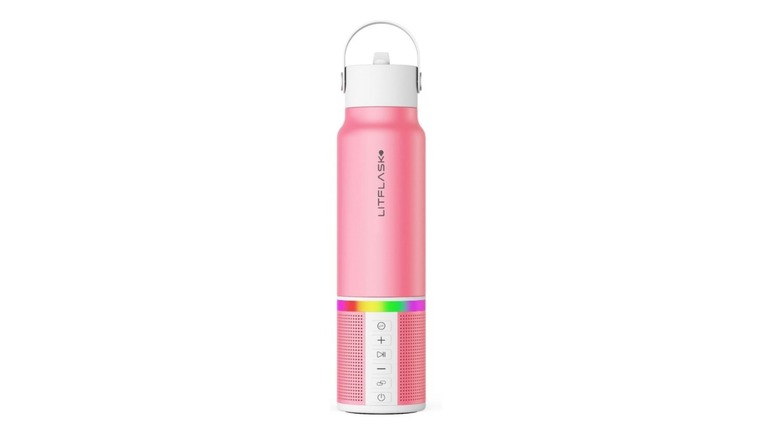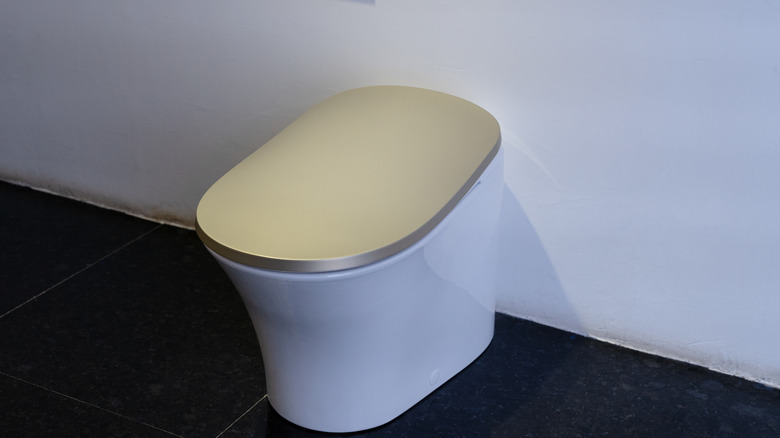12 Home Gadgets And Appliances That Are A Complete Waste Of Money
We may receive a commission on purchases made from links.
No one likes to think they're throwing money away. And yet, it's hard to resist the novelty of a new home gadget, especially when it essentially promises to save you time, money, or both. Perhaps you've been enchanted by the promise of waking up to a slice of toasted bread, or you've been daydreaming about making your own loafes and baguettes. You know that gadgets aren't always what they're propped up to be, and that whatever convenience they do offer is often offset by an unexpected drawback. Still, it's so hard to resist them!
Don't worry, that's what we're here for. We found some of the most popular gadgets that are absolutely not worth the hype. In some cases, we identified which products you should get instead, but sometimes it's better to give up on the idea altogether. The last thing anyone needs is more stuff collecting dust and taking up valuable real estate, and that's exactly what most useless gadgets end up doing. With this in mind, let's look at 12 home gadgets and appliances that are usually a complete waste of money, and what a better alternative looks like.
Electric salt and pepper shakers
For decades, people have poured salt, pepper, and other spices into jars with fitted lids with holes in them, picked them up, and sprinkled the contents on their food. Then came the smart revolution, where everything is electronic, rechargeable, and connected to the internet, including salt and pepper shakers. For most, the switch wasn't necessary; The classic, non-smart, non-internet-connected shakers still do the job just fine, and at a fraction of the cost.
Granted, electric salt and pepper grinders can benefit those with limited hand mobility. It removes the need to twist the grinder manually, giving you fresh flavor with the push of a button. That said, most people can use a regular salt or pepper shaker and don't need one of their high-tech counterparts. There are downsides to this technology, too. Just think of what would happen if, in the middle of cooking dinner, you realized you forgot to charge the salt shaker.
Toaster ovens
What makes a toaster oven attractive is obvious: They don't take up much space on the counter, they preheat quickly, and they don't require as much power as a standard oven. It even takes less time to clean them, since they're so much smaller. But the real question is: Do you really need it? For most people, the answer is no, considering the tons of other options available to cook and heat your food.
A decent air frier, including one of Amazon's many cheap but great air friers, can do anything your toaster oven can, and more. That's hardly a surprise: Air friers are just small convection ovens. However, since they're so small, they heat quickly and aren't as power-hungry as a regular oven. Other alternatives to toaster ovens include a microwave, a regular toaster, and a traditional oven. Most kitchens will have at least one of these, meaning that few people really need another cooking appliance. If there's one unique kind of oven you might want to look out for, it's the smart oven. However, these are still in their infancy compared to other kitchen stalwarts, and might not work very well.
Bread making machines
There's nothing quite like the taste of homemade bread. However, it can take quite a bit of work to go from ingredients to loaf, between mixing, kneading, waiting for the dough to rise, punching, shaping, and baking. That's the issue that bread maker manufacturers have taken upon themselves to solve. Automated bread machines do most of the work for you: Just dump in your ingredients and click a button. You'll have homemade bread in no time, since this tool does most of the work for you. If you're baking bread on a regular basis and don't mind the cleanup, a bread machine might make sense. For most people, though, this appliance only gets used every once in a while.
Store-bought bread is still more convenient, and you may be able to get more variety. Making different kinds of bread with a bread-making machine takes some trial and error, and you might not like what you get when you start experimenting. Plus, there's the matter of cleaning up, something the machine won't do by itself. Finally, the machine's cost, which is well over $100 for most good models, makes this an investment you might want to think twice about. When the craving for fresh, home-baked bread strikes, you can just use your oven. It'll take longer, but if you like braking, that's time well spent.
Deep fryers
Fried food isn't exactly healthy, but that's not a dealbreaker for everyone. Home deep fryers used to be all the rage, with their ability to deliver fast, restaurant-quality frying at home. They're pretty easy to use, too, and as one can guess by their prevalence in fast food restaurants, they tend to cook things very quickly. If you like the crunchiness that a good fryer can deliver, there's nothing else quite like it. But times have changed, and a mix of dietary concerns and new food preferences has made deep fryers less popular.
Deep fryers can get messy and expensive, too. When you're done cooking, you'll need to remove the oil and store it (or dispose of it correctly), then clean the deep fryer's basket and oil chamber. That takes a lot of time, plus you lose a lot of oil during the transfer, which isn't cheap. While the two cook food in very different ways, many users seem to have replaced their deep fryer with a good air fryer from a major brand. Those miniature ovens don't use oil and can cook a larger variety of food. Plus, they don't require you to clean all that greasy residue after each use.
Touch-free hand soap dispensers
Hands-free soap dispensers in public spaces are a welcome gift. No one wants to touch bathroom faucet handles, soap dispensers, and paper towel rolls that hundreds of others have also touched. However, now that this convenience is starting to creep into our homes, it's easy to see how unnecessary it really is. The theory is simple: Just hold your hands under the pump and wait for the soap to drop, then wash and rinse like normal. This type of gadget can be great for anyone with limited mobility, but for most, a traditional soap pump dispenser does the job just as well.
"Hands-free" anything is something of a myth. You might avoid touching the pump each time you wash your hands, but eventually, that pump will get dirty and dusty, and you'll need to clean it. It will also need to be charged occasionally, lest you end up with dripping wet hands and no soap to clean them with. If you want a money-saving alternative to traditional, hand-operated soap dispensers that technically doesn't even need to be cleaned, there's always the soap bar.
The PancakeBot
If you own a restaurant or a bakery and you want to expand into the world of custom-made pancakes, then a PancakeBot might be right for you. However, for the average homeowner and breakfast connoisseur, this gadget, priced between $299 and $779, is definitely overkill. Yes, it would make for a cool gift, and yes, it's fun to watch, but going from pancake batter to a ready-to-eat meal is a lot more work than it looks. With the pancake bot, you've got to mix your batter, load it into the machine, choose your design and watch the bot do the work (this is the easy part), and get the pancake off the griddle before it burns. You might have to repeat some of these steps if you're doing something complex, like using different colors.
Then, there's the matter of cleaning up and storing the machine, unless you want it to take all the free space in the kitchen. An alternative to the PancakeBot is to freehand your pancake designs using basic plastic squeeze bottles for multiple colors, or a simple mixing cup for basic flapjacks. None of those are high-tech solutions, and your pancakes might not look as great, at least at first. That said, this isn't a problem that requires a high-tech solution, and definitely not one that is so expensive.
Smart toaster
There's no shortage of smart devices that will improve your kitchen, connecting to the internet and letting you control them from your phone or set pre-programmed schedules. For most of us, a smart toaster is not one of them. It might be a reasonable purchase if you like all kinds of high-tech or just want bragging rights, but for the rest of us, a smart toaster isn't usually a smart purchase.
All things considered, smart toasters aren't worth it. In theory, they're supposed to toast different types of bread to perfection with various settings and pre-programmed timers. Some claim that they can base their timings on bread type and thickness, which is useful since toasting a slice of white bread does not take as long as browning a bagel. In the grand scheme of things, however, these features offer minimal benefits, especially because most "smart" toasters, even those that come in at $300 or more, aren't actually smart. You won't be able to ask Alexa to make you a toast. Sorry.
Smart umbrella
The classic umbrella has been keeping people dry for decades. They're not perfect, given how easily some of them break under a strong gust of wind, but they do a decent job of keeping the water off of you long enough to make your way indoors. Like many timeless tools, the umbrella has undergone the "smart" upgrade. Smart umbrellas connect to your phone and can alert you if you've left home without it when there's a downpour brewing, and they offer a location tracking service that alerts you if you leave it behind.
Other upgrades include built-in LED flashlights, speakers, and reflective strips to help you stay visible at night and in the rain. This gadget might be feature-loaded, but think about how often you use an umbrella. If it's frequent, and you like what's on offer, a smart umbrella might seem like it makes sense. Now think of how many umbrellas you've lost or broken in the last few years. Chances are, this expensive gadget might start looking less and less appealing.
Vacuum bags
Vacuum bags sound great, in theory. For clothes and beddings, these bags help you store bulky items by sucking the air out and compacting them, making room for other things. For food, vacuum-sealer machines are a popular gadget in the kitchen, seen as they can help food stay fresh for longer by separating it from air and all kinds of contaminants. It's a similar concept with slightly different use cases, but one of those isn't as good as the other. Vacuum bags tend to be hard to seal, sure, and if you mess up, you end up with a slow air leak that makes the bags balloon back to their original size. However, you can learn to use vacuum bags properly.
Vacuum-sealed food bags, on the other hand, have a different, hard-to-fix problem: they're expensive. At the same time, they're easy to mess up, especially if you're measuring and cutting the bags yourself. The goal is to reduce food waste and save money, and it's hard to do so when you're spending so much money on the bags. If you do plan to reuse some of those vacuum bags, you'll have to give them a very thorough cleaning by hand to avoid cross contamination. For many, it's just not worth the expense or the hassle.
Wi-Fi water bottles
Here's something you might not expect us to say, at this point in the article: Smart water bottles can make sure you stay hydrated. We all need to drink water, and most of us need to drink a lot more than we actually do. That's why smart water bottles are catching on, reminding you to take a sip every now and then and tracking your progress throughout the day. Most of them connect to your phone via Bluetooth to send you notifications when necessary, while some can even sense the temperature of the water in your bottle and sanitize it with built-in UV lights.
As we've come to expect, some of these Wi-Fi water bottles can get really expensive. That's the case of the Litflask, which is sold on Amazon for $100. All the extra features packed in the bottle (Bluetooth speaker, 5,000 mAh powerbank) can get a little heavy, and that's before you add the weight of the water. Ironically, some smart water bottles aren't waterproof, so you'll need to take extra care when cleaning them. A smart water bottle makes sense in some cases, but they're clearly not essential. After all, you can buy a regular water bottle and set reminders on your phone and achieve half of the functionality of a cheap smart bottle.
Bluetooth-enabled toothbrushes
Have you ever wished you had cold, hard data about your teeth brushing habits, such as how long you brush, the amount of pressure you apply, and whether you're brushing two times a day consistently? No? Well, if you did have that wish, a Bluetooth-enabled toothbrush would have been a great buy. If you've never wondered about any of these things, you can keep living your life undisturbed.
Bluetooth toothbrushes like the Oral-B iO10 Electric Smart Brush send data about your brushing habits to a companion app on your smartphone, where you can learn all the details about your brushing habits. Can this lead to a healthier mouth? Perhaps, and it certainly can come in handy for parents with kids who are learning to become more independent, since it would make it easier to keep tabs on them. However, if by adulthood you have a decent handle on these things, you probably don't need a whole separate app for your dental health.
Smart toilet seat
Smart toilets are weird, but they also sound like the toilet of the future, available right now. They usually include a bidet, saving you a bit of space, a heated seat, warm air drying, auto flush, and programs that will remember your preferences. However, if this is the toilet of the future, it's an expensive future we're heading towards. A whole $1,000 won't even get you an integrated bidet function, just a heated seat and self-flushing. An alternative might be a smart toilet seat, which fits to an existing toilet, making it cheaper, and gives you many of the features of a smart toilet.
However, installing a smart toilet seat is no walk in the park, either. You'll need to have access to a power outlet near the toilet to get the full benefit of the smart features, and to the water line if you want to use it as a bidet, too. Chances are, you'll need the help of a professional to install this. Both smart seats and smart toilets are an expensive investment for pretty much no savings, all things considered, so you'll need to decide for yourself if these features are truly worth the price.
